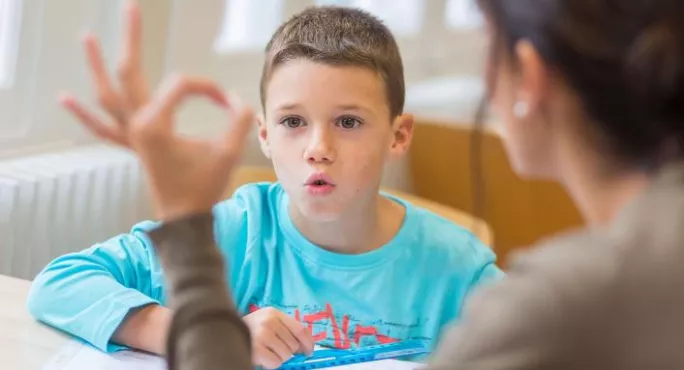How to help pupils with speech difficulty in lockdown

Stammer - or stutter (on the other side of the Atlantic) - is not normally a hot topic.
But Joe Biden’s presidential campaign sparked a media interest in speech difficulty: here was a future president who had tackled adversity on many levels, including a daily battle to get his words out.
“I have worked my whole life to overcome a stutter. And it is my great honour to mentor kids who have experienced the same. It is called empathy. Look it up,” wrote Biden on Twitter, knocking back Trump’s attack on his verbal hesitations.
‘We will rise’
So when the US youth poet laureate, Amanda Gorman, stole the show at Biden’s inauguration, despite her own speech difficulty, perhaps it was no surprise.
Gorman’s flawless diction revealed nothing of her auditory processing disorder and the particular difficulty she has struggled with her whole life in articulating “r” sounds’: “We will raise…/We will rise…/We will rebuild, reconcile and recover”.
According to the UK charity Stamma, children in lockdown have experienced a 58 per cent increase in stammering.
But in remote learning, opportunities for spontaneous communication are dramatically reduced. Fatigue from being confined at home makes stammers worse, and lockdown leaves us - let’s face it - with far less to say around the kitchen table, so we get out of practice.
Combine that with wifi glitches and the artificial feel of digital communication and it’s a minefield of difficulty for pupils with speech, language and communication issues.
How to help
So, what can we do to help pupils with this difficulty in lockdown? First and foremost, special educational needs and disability coordinators should let staff know that this problem is worsening in lockdown.
Parents should be contacted if a pupil has started to stammer and those with existing difficulties should be encouraged to continue their speech and language therapy remotely.
Some other approaches to bear in mind:
- Speak to the pupil one to one and ask them what would help - one pupil with stammer is very different from another.
- Allow non-verbal or very short responses when taking the register.
- Use mini whiteboards, Post-It notes or the chat function alongside spoken contributions and responses.
- Use digital breakout rooms as much as possible, enabling any pupils with speech difficulties to work in smaller groups alongside pupils you know they feel comfortable with.
- For presentations, allow pupils with speech difficulties to present just to the teacher. If it has to be to the whole class, let them know they have as much time as they need to avoid extra pressure to get the words out.
- Don’t break eye contact and look away, thinking this will help the speaker.
- Allow younger children to read aloud in unison with another if they feel that would help.
- Drama can also play a powerful role. Many actors, including Emily Blunt, credit acting with transforming a stutter. Bruce Willis says: “It was crushing for anyone who wanted to express themselves, who wanted to be heard and couldn’t. It was frightening. Yet, when I became another character, in a play, I lost the stutter. It was phenomenal.”
- Music - and, in particular, the predictable rhythms of rap - can also work wonders. While Amanda Gorman used songs from Hamilton to practise her “r” sounds, the young Ed Sheeran turned to the rhythmic expletives of Eminem, crediting the song Rap God with transforming his difficulty with stammer.
So, as lockdown dampens our dialogue, let’s collaborate across the curriculum and listen even more to powerful voices - voices that once struggled with speech impediment. It may have shaped them but it definitely does not define them.
Register with Tes and you can read two free articles every month plus you'll have access to our range of award-winning newsletters.
Keep reading with our special offer!
You’ve reached your limit of free articles this month.
- Unlimited access to all Tes magazine content
- Save your favourite articles and gift them to your colleagues
- Exclusive subscriber-only stories
- Over 200,000 archived articles
- Unlimited access to all Tes magazine content
- Save your favourite articles and gift them to your colleagues
- Exclusive subscriber-only stories
- Over 200,000 archived articles